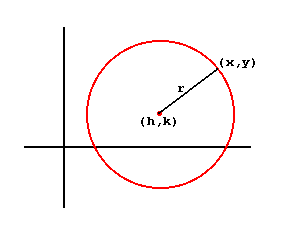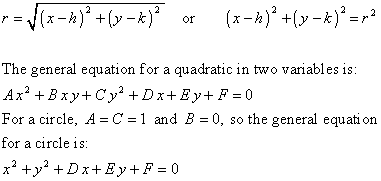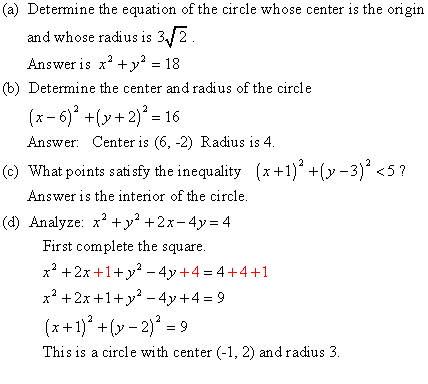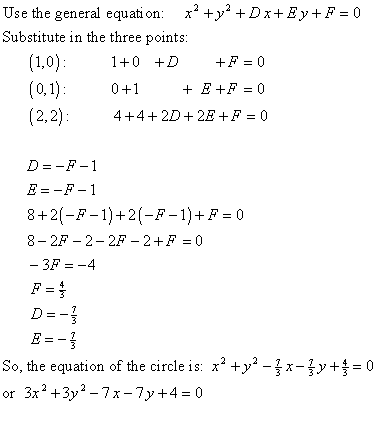Lesson #148 Circles
|
Quote of the Day:
"The greater our knowledge increases, the greater our ignorance unfolds."
-- John F. Kennedy
Objectives:
The student will review the definition of a circle.
The student will apply the general formula for a circle to specific problems.
Given the center and radius of a circle, the student will write the equation for the circle.
1. How do we define a circle (the locus definition)?
Definition: A circle is the set of points in a plane at
a fixed distance from a given point.
To develop the equation for a circle:
Call the given point (h, k) – this is the center.
Let the fixed distance be r – this is the radius.
Let the set of points be (x, y) – this is the circle.
Using either the distance formula or the Pythagorean
Theorem, we obtain the general formula for a circle
whose center is (h, k) and has a radius of r:
2. Examples:
3. Circles through points
How many points are needed to determine a unique circle?
How many circles may be drawn through one point?
How many circles may be drawn through two points?
How many circles may be drawn through three points?
There is only one circle that may be drawn through three
non-collinear points.
Given three non-collinear points, how would you find the
equation of the circle that passes through them?
There are at least three different approaches:
(1) Find the intersection of the perpendicular bisectors
of the segments joining the three pairs of points.
This gives the center. Then use the distance
formula to determine the radius.
(2) Use the formula
5. Assignment: Circle Problems |



 Substitute the coordinates of the three points for
x and y, then solve the three equations for the
three variables h, k, and r.
(3) Use the general equation of the circle
Substitute the coordinates of the three points for
x and y, then solve the three equations for the
three variables h, k, and r.
(3) Use the general equation of the circle Substitute the coordinates of the three points for
x and y, then solve the three equations for the
three variables D, E, and F.
4. Example
Determine the equation of the circle that passes
through the points (1, 0), (0, 1), and (2, 2).
Substitute the coordinates of the three points for
x and y, then solve the three equations for the
three variables D, E, and F.
4. Example
Determine the equation of the circle that passes
through the points (1, 0), (0, 1), and (2, 2).
